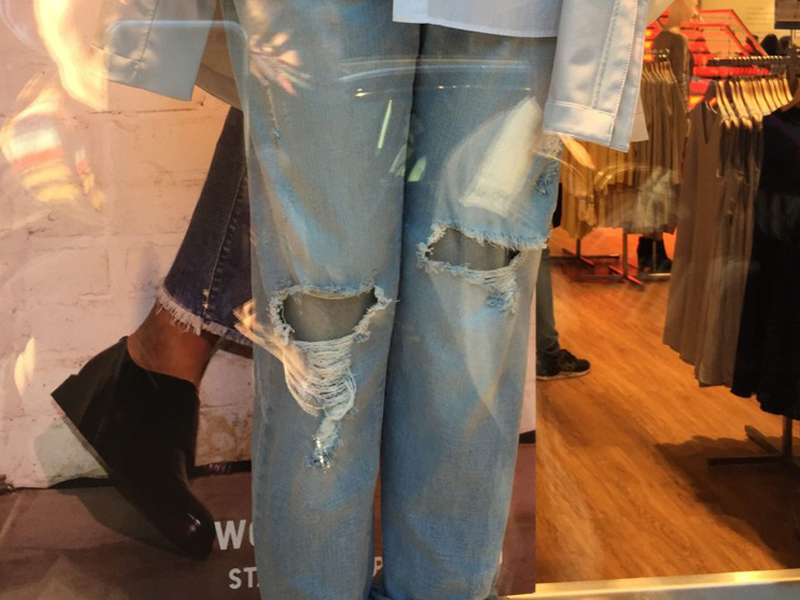What is the message of ripped jeans?

Ripped jeans are forbidden when one books a trip in South Korea to the demilitarized zone. The dress code is strict. Also no flip flops. These rules are strictly enforced as North Korean soldiers take photos and produce propaganda and signal to their people that other countries are too poor to afford proper clothing.
This made me think about the whole ripped jeans fashion. Perhaps they are just a descendant of “boho-chick” that became popular around 2005, drawing from bohemian and hippie influences. This would make them in a sense very old-fashioned. Now one sees ripped jeans everywhere, and if you want, you can spend hundreds of dollars on them after the manufacturer distresses otherwise new material. I have to admit I never understood the trend that well. In cold weather I tend to get cold knees when they are not warmly covered, and in summer I tend to get sunburn easily.
Are ripped jeans to make fun of the poor? Or of people of the trade? Or of people who stitch up holes? Or are they just a subconscious longing for physical work for those sitting at a desk or visiting expensive hotels and bars? I personally have no strong opinion on this, but am curious to hear comments of what message the wearers want to send and think they send.
Last year there was a major outcry at the Museum of Fine Art in Boston about “appropriate” clothing when Monet’s painting “La Japonaise” was exhibited. The painting shows in full-length Monet’s blond and very European wife Camille wrapped in a beautiful kimono. Museum visitors were offered a choice of kimonos to be photographed in next to the painting. What was originally billed as a “Kimono Wednesday” teaser to “channel your inner Monet” became a major cause of protest over “cultural appropriation and racist exotification of Asian culture”. Never mind that even art historians considered Monet’s intent as a bemused poke about the fascinations of Parisians with Asian clothing at the time. At the MFA, protesters and a good numbers of counter protesters sparred over exploitation versus celebration of Japanese culture in the form of a garment. This whole episode did leave me troubled in how nasty people would become over what someone else was wearing and how selective it was.
I assume the outcry over the kimonos was possible since protestors on both sides had extra time and felt sufficiently offended. Wearing torn jeans that would imply (insert here – whatever the politically incorrect term is) probably doesn’t incite the same fervor, since individuals who have distressed jeans from wear and tear probably wouldn’t have the time to do so or might just be bewildered or bemused. Or would they actually believe that the Americans are too poor to buy clothes?
References
1. https://www.bostonglobe.com/arts/2015/07/18/counter-protesters-join-kimono-fray-mfa/ZgVWiT3yIZSlQgxCghAOFM/story.html

1 Comment
What Is the Message of Ripped Jeans?” on comforttalk.com/blog-insights delves into the deeper meanings behind a popular fashion trend. Thought-provoking and insightful, this article offers a fascinating exploration of style and self-expression.